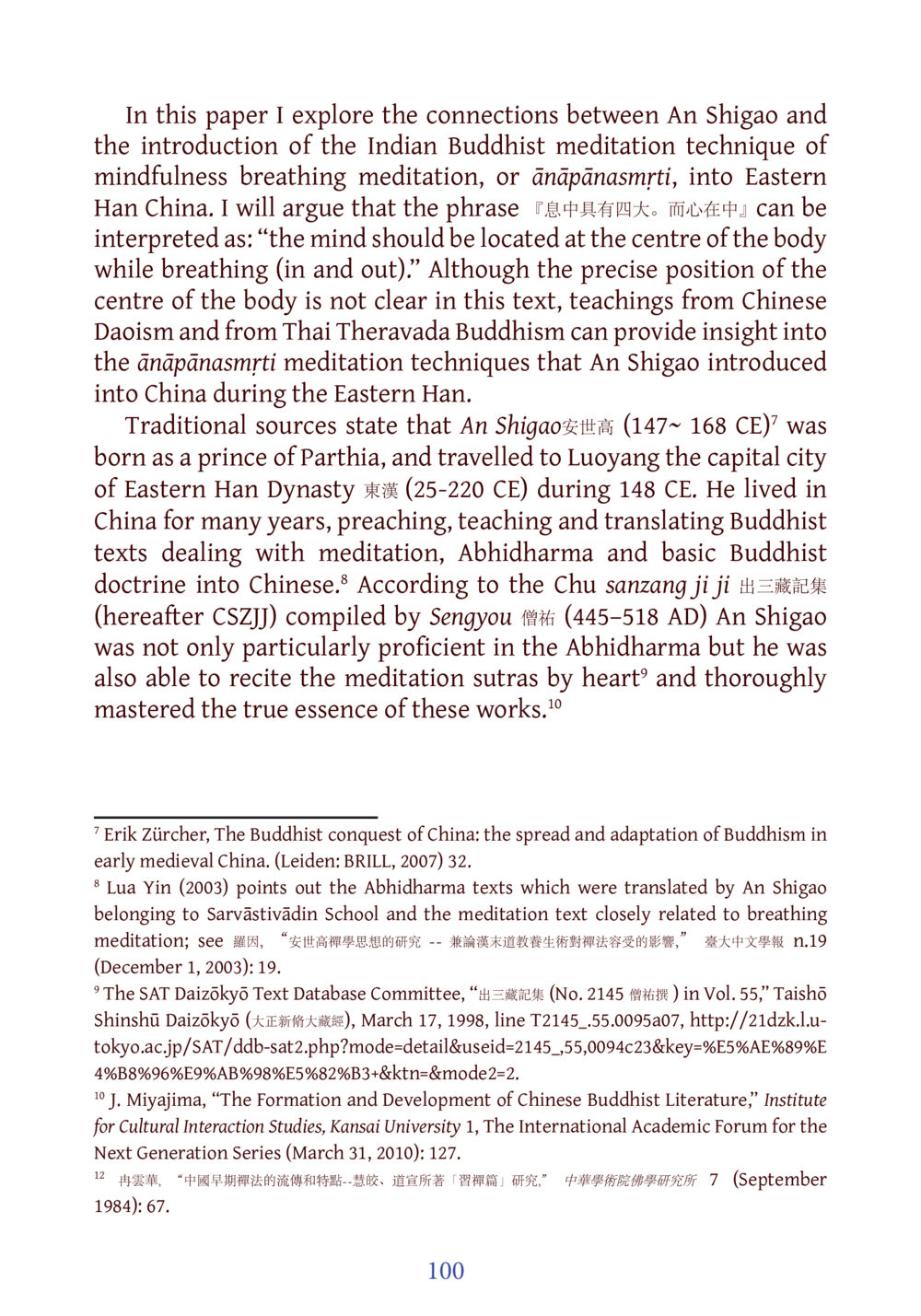The Influence of An Shigao on Mindfulness Breathing Meditation in Eastern Han China : หน้า 121/141
DIRI Journal : หน้า 121/141 Exploration of An Shigao's introduction of mindfulness breathing meditation into Eastern Han China and its connections to Buddhist and Daoist teachings.
0 ครั้ง

สรุปเนื้อหา
This paper examines An Shigao's role in introducing the Indian mindfulness breathing meditation technique, ānāpānasmṛti, into Eastern Han China. The phrase「息中具有四大。 而心在中」suggests that the mind should focus at the center of the body during respiration. Traditional sources note An Shigao's background as a Parthian prince who traveled to Luoyang in 148 CE. He impacted Chinese Buddhism by translating texts on meditation, Abhidharma, and core Buddhist concepts. His adeptness in Abhidharma and meditation sutras solidified his significance in the Buddhist community during this era. Insights into meditation techniques may also be drawn from Chinese Daoism and Thai Theravada Buddhism. This synthesis of ideas illustrates the assimilation and evolution of Buddhist practices in early medieval China. For more details, visit dmc.tv.
หัวข้อประเด็น
-An Shigao's background
-The introduction of ānāpānasmṛti
-Connection between Buddhism and Daoism
-Influence on Chinese meditation practices
-Translation of Buddhist texts
ข้อความต้นฉบับในหน้า
หน้าหนังสือทั้งหมด













































































































































